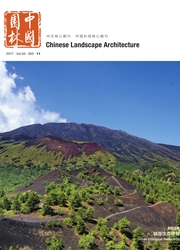

 中文摘要:
中文摘要:
利用RS与GIS手段,辅以统计资料,利用景观指数分析方法,对1979、1989、2001和2009年南京主城区绿色空间格局的演变进行分时段研究。研究发现:绿色空间整体不断缩减,破碎化、分散化加剧;公共绿地、附属绿地不断扩展,斑块面积、曲折度、可达性水平不断提升,生态防护绿地保护相对较好,生产性绿地景观消失殆尽;快速城市化催化了绿色空间的重构,绿色空间受人为规划影响加深,由"自构"向"被构"转型趋势明显。
 英文摘要:
英文摘要:
Using GIS and remote sensing technology, the dynamic features of green space spatial patterns in the central area of Nanjing during four periods of 1979, 1989, 2001 and 2009 are analyzed based on remote sensing, economic and demographic data from the perspective of landscape ecological index. Green space was in the decreasing, broken and decentralized tendency. The public green space and attached green space were expanding along with the increasing of the patch area, patch shape degree and accessibility level. Parts of ecological green space turned into public green space, which got good protection. The productive plantation area reduces sharply and soon, and will disappear in the near future. The speed-up urbanization brings about restructuring of green space in China. Man-made factors of planning influence green space deeply. Green space patterns transform from self-constructing to being-constructed obviously.
 同期刊论文项目
同期刊论文项目
 同项目期刊论文
同项目期刊论文
 期刊信息
期刊信息
